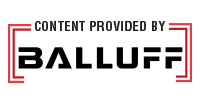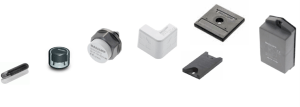
Choosing an RFID tag for your traceability application can be difficult given the huge variation of tags available today. Here are four main factors to keep in mind when selecting a tag, which will greatly contribute to the success of your RFID project.
Choose tag type: I like to start with tags and work backward. Tags come in many shapes and sizes – from paper labels to hang tags, pucks, and even glass capsules and reusable data bolts. First, think about where you want to mount your tag. It is important that it does not interfere with your current product or production process. If you plan to tag a metal product, using a metal-mount style tag will give you the best results.
Assess the required read range: Think about how much range you need between your RFID readers and your tags. Remember that the shorter your range, the more options you will have when selecting a suitable frequency. While all frequencies work for short ranges, long ranges require HF (High Frequency) or even UHF (Ultra High Frequency) products. As a rule of thumb, it is best to keep your reading range as short as possible for the most reliable results.
Consider the environment: RFID tags are designed to withstand high temperatures, chemicals, water, and moisture. If your environment involves any of these conditions, you will want a tag that is up to the challenge and will remain functional.
Choose the data storage option: RFID tags can be read only or read/write, so think about what kind of data you want to store on your tags. Do you want your tag to be a simple license plate tied back to a centralized database, or do you want to store process/status data directly on the tag? RFID gives you a choice and now is the time to think about what and how much data you want to maximize the benefit of RFID for your process.
So now that you have thought about tag type, read range, environment, and data, you already have a promising idea of which tags will work in your application. The final step is to get price quotes and get started with your project. This is a wonderful time to ask the RFID experts for more recommendations and ask about on-site testing to make sure your tags are a great fit for your application. It is also an excellent time to collect recommendations for which reader will pair best with your tag and application.
